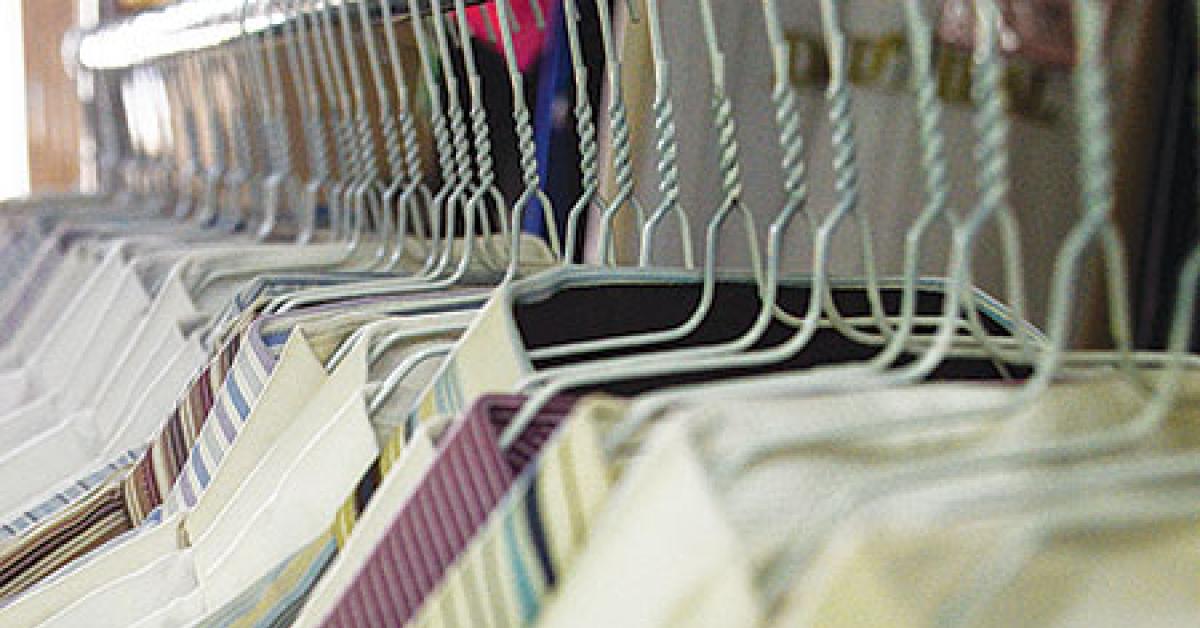PEMBROKE, Mass. — As a dry cleaner, you run a factory. The unifying principle of all factories is efficiency.
If you question my metaphor of a dry cleaner as a factory, it is correct that a dry cleaner does not turn out a product, but instead imparts a service onto goods. But by adding to that product — providing cleaning and wearability — you qualify as a production operation.
Make every operation the most efficient it can be and your cost per unit will be the lowest possible sum.
With a low cost of goods sold, your profit will be greater. You will have more money to grow your business, develop specialty niches and establish a commanding presence in your market.
If you could lower your direct production costs from 38% to 36%, and you worked on a 4% profit margin, you would be increasing profits by 50%—that’s significant.
Pieces per operating hour (PPOH) is your mantra.
How many shirts can you turn out on your double-buck per hour? How many slacks does the trousers presser push out each hour? What output is your cleaner capable of in daily poundage? How long does it take for your inspector to inspect 100 garments? How many deliveries can your route man make in an 8-hour shift? Every aspect of your factory is an operation.
Let’s take a look at one aspect: How many garments does your presser turn out per hour? In other words, what is the PPOH?
“Seventy garments an hour,” you might say. You’ve computed that by totaling weekly output and dividing by hours worked.
How can you boost PPOH to 75 without compromising quality? Maybe a new, state-of-the-art machine would enable increased PPOH.
This is tricky because sometimes the latest models just have more bells and whistles, with no built-in speed advantages. On the other hand, technical advances can increase efficiency. You must make a careful study of the latest technology and decide whether the new unit offers enhanced efficiency.
Did you observe something the presser is doing which, if eliminated, would result in a higher PPOH?
For example, the presser might be taking 10 steps to bring each garment to his machine. If these clothes were placed within reach, there would be no disruption in processing. A continuous workflow leads to a higher PPOH.
Urge a rhythm, so that there is no interruption in movement. Maybe a rack can be set up alongside the presser and the presser needs to fill it only every 10 garments.
Spend time observing the presser. Sit alongside and maybe see an efficiency that wasn’t apparent.
For instance, envision a stand fashioned to the press’ base, so that a sprayer can sit on it and be a hand’s length away so the presser can just reach and spray. Such an alteration doesn’t seem like much, but the improvement allows the presser to make a continuous, subconscious motion to press a garment.
In essence, careful observation is the study of time and motion, created by industrial engineer Frederick Winslow Taylor in the late 19th century. Taylor went to factories, ran his studies, and saved companies time and money, part of the “great efficiency” movement.
Efficiency experts saw better ways to do things. They saw how motions could be eliminated. They revamped the production floor.
You need to learn to become a careful observer. Put on your “ultra-violet glasses” that remove the extraneous stuff around the individual and focus on movements, motions and thought processes.
Keep trying to improve, to refine the production process. Visit other businesses. You never know when a new machine will fit your operation.
Check back Thursday for the conclusion.
Have a question or comment? E-mail our editor Dave Davis at [email protected].

